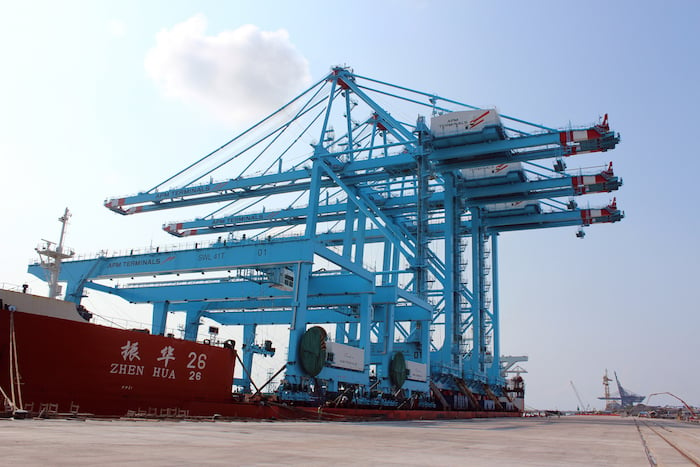Deliveries of ship-to-shore container gantry cranes, which are transported by specialized heavy-lift vessels, rose slightly in 2015, but remain below the pre-recession peak.
Last year’s deliveries totaled 237, compared with 233 in 2014, according to an annual survey by the Port Equipment Manufacturers Association. Deliveries still haven’t returned to the strong numbers of 2006-2008, when they totaled more than 300 a year, including a record 362 in 2006 — almost one a day.
More than one-third of the deliveries during those peak years were to Chinese ports, which were scaling up rapidly to handle double-digit volume growth and rapid increases in ship sizes, PEMA said.
Orders tailed off during the recession. Because there typically is a lag of a couple of years between orders and delivery, installations of new cranes slowed during the years immediately following the recession. Manufacturers reported only 134 deliveries in 2011.
During the last several years, orders have shifted to other regions, such as Latin America and non-Chinese ports in Asia, which are receiving large ships displaced by even larger vessels that carriers are deploying on main Asia-Europe routes.
China accounted
for only 28 of last year’s crane deliveries, or 12 percent, compared with 76 to ports in other Asian nations, 43 to Europe, 39 to Latin America, 19 to North America, 16 to the Middle East, 11 to Africa, and 5 to Australasia.
Reflecting the increase in container ship sizes, the trend has been toward taller cranes with longer booms. The Port of Los Angeles in 2016 opted to raise the heights of five cranes in order to handle ships with capacities of 18,000 twenty-foot-equivalent units. Most ports, however, have ordered new cranes.
China’s ZPMG, the largest manufacturer of ship-to-shore gantry cranes, operates its own fleet of vessels for the specialized deliveries. Several heavy-lift operators, including Big Lift, Jumbo, SAL, and Dockwise, also deliver cranes on their vessels.
Typically, the cranes are moved on vessels that are ballasted to levels even with the quay, and then rolled onto the dock for final touches on assembly. Deliveries have become more complicated with the increasing size of ship-to-shore cranes.
Two-thirds of the cranes ordered in 2015 had booms stretching at least 60 meters, enough to span 22 rows of containers on a ship. An additional 15.6 percent spanned at least 50 meters, or enough to cover 18 rows. The Panama Canal’s old locks can handle ships loaded with 13 boxes across.
Accroding to JOC.com, new cranes are taller, and the booms are longer. The latest generation of container ships carries boxes eight high above deck, which generally requires at least 45 meters between the quay and the spread underneath the crane hoist. Forty-five percent of the cranes delivered in 2015 met this criteria, and 15 percent had quay-to-spreader heights of at least 50 meters.
Contact Joseph Bonney at [email protected] and follow him on Twitter: @JosephBonney.




